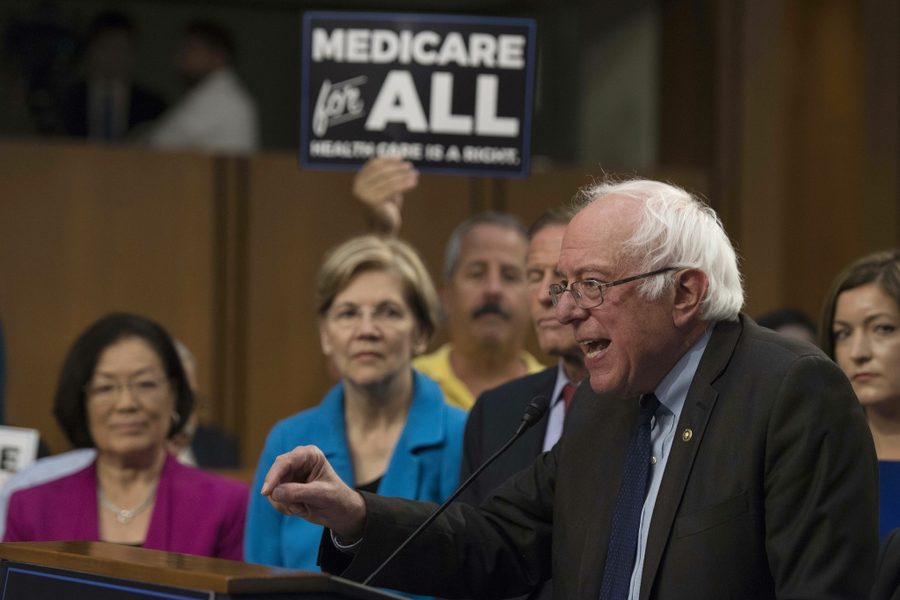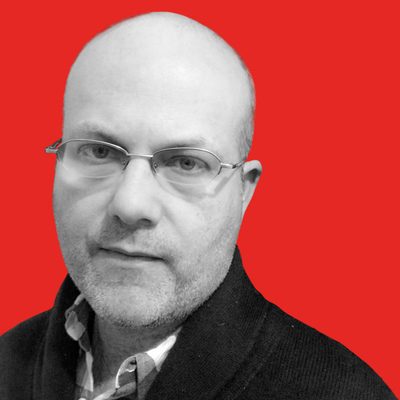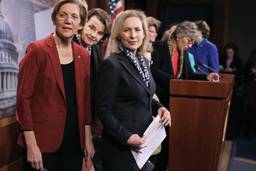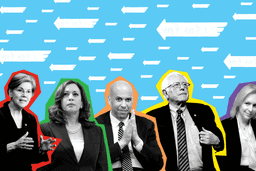Bernie Sanders Just Sidestepped Corporate Media to Promote Medicare for All to 1 Million Viewers
The democratic socialist senator’s town hall on universal healthcare marks a new phase in the political revolution.
Theo Anderson

The revolution will not be televised, but it might be live-streamed.
“It ain’t gonna be on CBS, it ain’t gonna be on NBC,” Sen. Bernie Sanders said on Tuesday evening, near the end of a “Medicare for All Town Hall” that was streamed to an estimated audience of more than a million people over three social media outlets — Now This, Attn: and The Young Turks Network (YTN). Sanders was referring specifically to serious debate about our healthcare system, but his words spoke to more than that.
Sanders’ town hall showed the senator — currently the most popular politician in the United States — freed from the confines of traditional mainstream media and able to dig in to issues ranging from healthcare to campaign financing to the corruption of our political system.
Earlier on Tuesday, CNN released a poll showing Sanders with a 57 percent favorability rating. Among Democrats that number was 82 percent. It also showed that Sanders would defeat Donald Trump in a hypothetical presidential race, winning 55 percent of the vote.
The democratic socialist senator took advantage of this popularity to spread his message directly to viewers without, as Sanders’ pointed out, the interruption of ads from pharmaceutical and insurance companies. And in the process, he planted four distinct flags.
One flag was in the media landscape. Sanders’ cry for “political revolution” has always been more about process than specific policy — multiplying and opening up the channels of information and fostering robust democratic engagement.
On Tuesday, Sanders noted that the event was the first nationally broadcast town hall taking place outside the corporate media. “This is, I think, kind of revolutionary, is it not?” he said to YTN host Ana Kasparian in a pre-town hall interview. “This could be the very first step in bringing millions of people into serious discussion about the serious issues facing our country.”
It’s a common lament that the Right has been brilliant at creating an alternative media ecosystem — through Fox News, Breitbart, conservative radio shows and Donald Trump’s Twitter account — while the Left has struggled to get its message into the mainstream media or to develop alternative outlets.
The Medicare for All town hall may have been but a small step, yet it confirmed that Sanders — who has about 7.5 million Facebook followers, hosts a podcast, and regularly creates polished and shareable video content — recognizes the promise of the burgeoning new media infrastructure and is moving quickly to take advantage of it. Which is a wise move if you say you want a revolution. YTN has nearly 3.6 million YouTube subscribers. Attn: has nearly 5.6 million Facebook followers. Now This has about 13 million Facebook followers.
By engaging these audiences directly, Sanders is reaching a large pool of potential voters who seek their news outside of traditional outlets.
Sanders’ second flag was planted in the single-payer debate.
Universal healthcare was Sanders’ trademark issue during the 2016 presidential primaries, and for good reason. By demanding an end to the private insurance industry, Sanders has been able to speak out against both rampant inequality and the corruption of our politics. On Tuesday, he continued his offensive. “These guys,” Sanders said at one point, referring to pharmaceutical and insurance companies, “have unlimited sums of money to spend in the political process in order to ensure that they make billions and billions of dollars every single year in profit.”
The majority of the 90-minute town hall focused on laying out the pragmatic case for single payer: It costs less and it works better. The United States spends about 17 percent of GDP on healthcare, versus roughly 9 to 11 percent in other G7 industrialized democracies. But for all its spending, the United States lags far behind in outcomes.
The Medicare for All bill that Sanders introduced in the Senate last year, which now has 16 Democratic cosponsors, would phase in an expansion of Medicare over four years, reducing the age of eligibility each year by a decade. Polls have shown that roughly 60 percent of Americans support such a system.
Of course, the opposition to single-payer remains intense, not just among the GOP and the insurance industry but among a segment of corporate-friendly Democrats as well.
But Tuesday night’s town hall showed Sanders making the case for universal healthcare not only in moral terms, but as an economic imperative as well. He argued that healthcare should be a right and not a privilege, but also that by investing in the workforce up front — through higher taxes — individuals and businesses will pay far less over the long run. As a result, workers will be healthier and more productive, and there will be far less bureaucracy to navigate.
Sanders planted a third flag as the radical anti-Trump: Interested in nothing but policy.
Eccentricity has always been a key part of Sanders’ appeal, but it used to be his style and appearance — the way he shouts his speeches, his Brooklyn accent, the droopy suits and flyaway hair — that caught people’s attention. Under President Trump, who sucks every last ounce of oxygen out of the room on the personality front, it’s Sanders’ devotion to ideas and policy that distinguishes him.
Tuesday’s event was divided into three half-hour segments, with three different guests appearing in each. The first group talked about the depth of the problems with the current system, the second group discussed how Medicare for All would be a colossal improvement and the final group provided some international perspective. Sanders alternately grilled them, shuffled and arranged papers on his desk, prodded speakers to hold the microphone closer to their mouths, and interjected clarifications, comments and rants, in the manner of a host on the set of a late-night, low budget talk show.
“Most Americans do not know that in virtually every other country on earth, not only is health care considered a right, with limited out of pocket or no out of pocket expenses, but the same thing in many cases applies to higher education or to child care,” he said at one point, planting the fourth flag of the evening — the flag of hope.
Sanders is well known for decrying the billionaire class and the sad state of American democracy. But what’s made him so popular isn’t anger or cynicism. It’s the fact that he seems to have a stubborn faith in people, genuinely believing that core values of equality and fairness are what drive most Americans, rather than simply the pursuit of power and profits.
To address the deep problems in our country and society, he has proposed bold solutions that challenge entrenched power while providing a higher standard of living for the majority of people, whether through Medicare for All, a $15 minimum wage, free public college or reform of our broken criminal justice system.
In order to achieve these radical policy changes, Sanders has made it a priority to educate Americans on both the profound challenges we face and how we can take them on. He has shown a stubborn belief that the people, supplied with the true facts of the situation, will choose to build a better democracy. And, consequently, detailed discussion of policy actually matters. In spite of everything we have learned about the state of the nation recently, a live-streamed town hall on healthcare policy is “a little bit revolutionary.” And a cause for hope.
In the face of the ongoing trauma of the Trump show, the country — if not the networks — might be ready for such a president. Stay tuned.








